Kenya's Marine National Parks
Kenya is better known for its animals of the land, but the species found in its seas are just as fascinating. The coral reef that stretches from Shimoni in the south to Malindi in the north is home to an astonishing one million types of marine life.
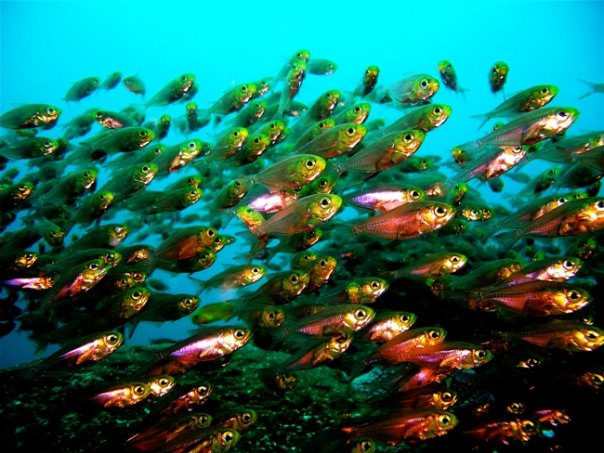
Kisite Mpunguti Marine National Park and Reserve
The southernmost of Kenya’s marine parks, Kisite Mpunguti is known as home of the dolphin, with 70 resident dolphins and recorded sightings of over 140. The park has coral gardens, and three small coral islands surrounded by reef, making snorkelling and diving here particularly rewarding. Over 250 species of fish have been recorded here, as well as sea turtles, whales, octopus, clams, starfish and sea cucumbers. Kisite Island, designated an Important Bird Area, is vital for the conservation of habitats favoured by birds, and is particularly known as being a breeding site for roseate and sooty terns.
Mombasa Marine National Park and Reserve
Stretching from Mombasa up the coast to Mtwapa, Mombasa marine national park is known for its popular beaches and water sports. Wind surfing, water skiing, jet skiing, kite surfing, snorkelling and scuba diving are all available here. The marine species found here are many and varied, and include crabs, starfish, stonefish, sea cucumbers, sea urchins and turtles. Coral species include acropora, turbinaria and porites. Birds both nest here and pause here along the routes of their migrations; crab plover and roseate terns are frequently seen.
Watamu Marine National Park and Reserve
Best known for the bird species found here, Watamu marine national park has recorded sightings of over 100 species of bird. The most colourful birds frequently seen here are the bright yellow canaries, the Golden Palm Weavers, the Lizard Buzzard and the much photographed Lilac Breasted Roller. This small marine park lies within the perimeter of the larger Malindi marine national park. Marine life here includes the protected green turtles and the rare dugongs. Mida creek is fringed with the mangroves favoured by many species, particularly crab.
Malindi Marine National Park and Reserve
Known for its spectacular coral gardens, this large marine national park has a wealth of attractions. Fringing reefs, sea grass, mangroves and mudflats, while all lovely in their own right, have the added benefit of attracting a wide variety of marine species to them. Zebra fish, turtles and dolphins are all found here, as are many varieties of shorebirds. Trips in glass bottomed boats, diving, water skiing, wind surfing, snorkelling and bird watching are all popular here.
Kiunga Marine National Reserve
At 270km², this lovely marine national reserve is the largest in Kenya. The reserve includes around 50 islands, the best known of which are Lamu, Manda and Kiwayu. Extensive coral reefs and mangrove forests provide refuge for turtles, dugongs, lobsters, sea urchins, starfish and crabs amongst others. The dhows that cruise this attractive swathe of ocean look little different from those that plied the trade routes, passing through these waters over a millennia ago. Dhow cruises, wind surfing, water skiing and snorkelling are popular activities here.
Interview with two Kenya Wildlife Service officers in Kiunga Marine National Reserve:
What kind of habitat do you find in Kiunga Marine National Reserve?
- We have mangroves, coral and sea grasses. And a lot of fish species. The five species we’re trying to protect the most are dugong, shark, dolphin, tuna and turtle.
How do you protect such species?
- We patrol the reserve, and we don’t allow illegal fishing. People are allowed to fish with traditional gear, but they’re not allow to fish for the protected species, and they’re not allowed to trawl. And there’s no commercial fishing in the reserve. We also control the cutting of mangroves, so as to protect the marine habitat and the species that live in it.
What do you do, day to day?
- We’re based at Kokoni, on the mainland. Every day we patrol the marine reserve in a speedboat to make sure security is all right, and to protect the endangered species. Turtles nest on an island called Mongo Shariff, towards Kuinga; a group of KWS officers, funded by WWF, is stationed there. Together we protect the turtles. Tuna is also overfished, so we’re trying to control the fishing of tuna.
How did you get into this line of work?
- When we were kids, we wanted to go into conservation. You must have an interest in something to do it perfectly.
Tamara Britten, 27 June 2022
Published also in: The Link; Safarilink's inflight magazine
About the region
Lamu
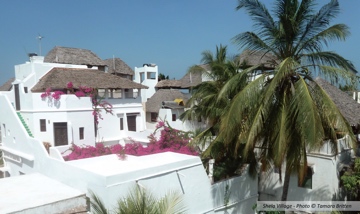
Made up of a collection of idyllic islands at the northern end of Kenya’s coastline, the Lamu Archipelago is living history. The Old Town’s narrow alleys, Arabic architecture, fort and mosques speak of age old culture, while the surrounding beaches and reefs sparkle in today’s sunshine.
Read more about LamuNorth Coast
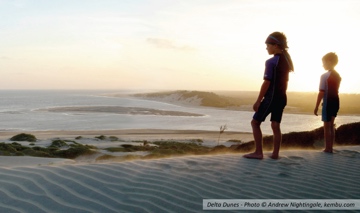
Stretching from Nyali to Malindi, the North Coast is known for its long white beaches, its trading history and its Swahili ruins. Highlights include Tana River Delta, Malindi Marine National Park, Watamu Marine National Park, Arabuko Sokoke Forest, Mida Creek and Gede Ruins.
Read more about North CoastMombasa
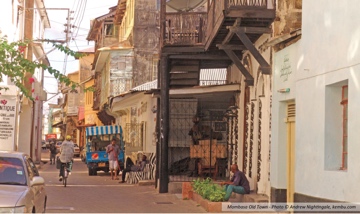
Mombasa has a colourful history stretching back a thousand years. Invasions, sieges and trade have all made their mark on the culture of this coastal island city. East Africa’s largest port, Mombasa is the gateway to all the landlocked countries of central Africa, and is the second largest city in Kenya.
Read more about MombasaSouth Coast
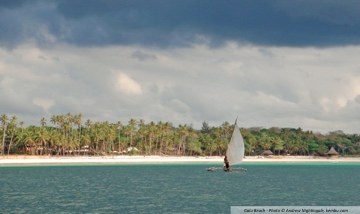
The South Coast is known for its long attractive beaches, vibrant night life, marine national parks, coastal national parks and remote islands. Highlights include Diani Beach, Kisite Mpunguti Marine Park, Shimoni Caves, Shimba Hills and Mwaluganje Elephant Sanctuary.
Read more about South Coast